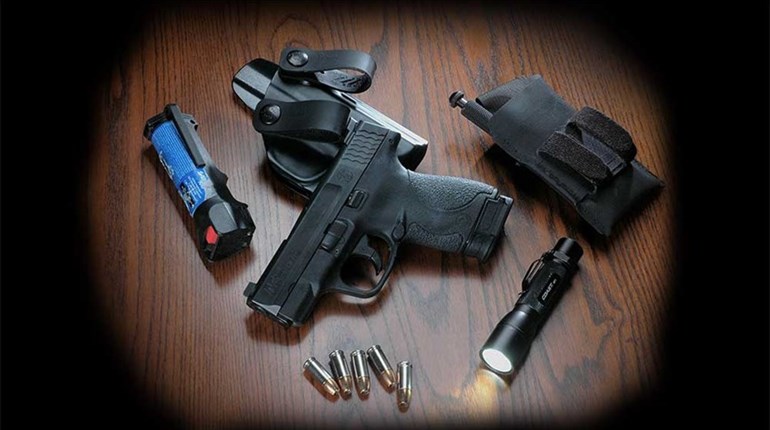
The eyewall of Hurricane Irma passed over our small community in Southwest Florida in September 2017. My family and I are safe and our house was unaffected by Irma's wrath, and we are picking up the pieces of the landscaping that are strewn about our yard. We are thankful and lucky to have emerged unscathed from all of this, and a big part of the reason why we this storm passed over us with essentially zero effect is due to the preparations we made when we relocated to Florida three years ago.
I have a simple system when it comes to disaster preparedness: I take the “Rules of Three” from Outdoor Survival and apply them to what my family needs to survive and thrive when all the niceties of civilization have (literally) vanished in the wind:
- You can survive three minutes without oxygen
- You can survive three hours without shelter in extreme weather
- You can survive three days without water
- You can survive three weeks without food
The first rule, three minutes without oxygen, is why the low-lying areas of my county were evacuated, because drowning in floodwaters or being carried away in a storm surge is a very real thing in a hurricane situation. We live in a higher part of our county, all of 40 feet above sea level, but it was enough to keep us out of the flood zone.
The second rule definitely applies to a hurricane situation. Seeking shelter from 120+ mile-per-hour winds is a darn good idea, which is why our family was huddled in our safe room, away from any exterior windows when Irma's eyewall passed over our house. As we found out, the same safe room you've created to deal with home invaders can work quite well as a safe room in an extreme weather situation. Also, you know that cliché about a hurricane sounding like a freight train passing over your house? It's true. That 's exactly what it sounds like.
Third, water. We keep at least five gallons of drinking water on hand at any given moment, and that amount will go up significantly based on our experience during Hurricane Irma. Water is one of the first things that is snapped up in advance of a major weather event, and buying enough for your family when everyone else wants water for their household as well can be a challenge. Fortunately for us, we have a friend who was a liaison to the National Hurricane Center for a number of years, and her expertise in reading weather maps gave us at least a day's head start on buying more water and all the other items we needed to weather the storm, but we could just as easily have been out of luck. Don't get caught in that situation. Be prepared ahead of time.
Fourth, food. Years ago, we bought a month's worth of freeze-dried “survival” food for our family, and we used some of it to feed ourselves after the hurricane passed. While it wasn't exactly a six-course meal at a ritzy restaurant, it was easy to prepare, nutritious, and it kept us going. In addition to this, we had plenty of snacks and bottled drinks on hand to keep us going in between meals. We prepared our food on our backyard grill, and it worked just fine. My neighbors all did similar things.
Speaking of neighbors, I can't stress the value of having a dependable support network of people when something like this happens. We live in an interconnected, online world, and I have many valuable friends all over the globe, but those friends weren't beside me with a power drill in their hand when it came time to install our hurricane shutters. We had people watching our street at night to keep any looters away, and we had people letting us know where the working cell towers were so we could let our friends and family know we were safe.
Some other gear-related tidbits:
- You can't have too many flashlights when the lights go out and stay out for an extended amount of time. I bought a set of five inexpensive 300-lumen flashlights beforehand, and they came in handy when the sun went down. Also, have at least one lantern for general illumination at night and have spare batteries for everything you're using.
- No matter how much you prep, you will forget something. In my case, it was foul-weather gear beyond just a windbreaker and a backup battery for my power drill. Lesson learned.
- Plan on communications going down and staying down. We had a small wind-up radio that kept us informed about things while the power went out, and that was a great comfort over the past few days.
- Candlepower works well when it comes to discouraging unwanted visitors to your neighborhood. We had a couple of cars poke their noses onto our streets late one night, but few blasts in their general direction from a 600-lumen flashlight was enough to send them scurrying away. I was also glad I had enough firepower with me to keep my family safe if lumens alone were not up to the task.
After everything is over and done, don't plan on things instantly returning to normal. We had our power, cell phone and internet service start up and go out multiple times in the aftermath. The grocery store shelves were empty, (as were the gas stations), and most of my county was under notice from the county to boil our drinking water for a few weeks, although my area was safe.
I am not a hard-core prepper: Everything my family used to mitigate Irma's wrath cost much less than a decent quality pistol, so getting ready to ride out a major storm or similar disaster is well within almost everyone's reach. Preparing for a natural disaster or similar upheaval to your everyday life is easy if you prioritize your prepping on what the danger really is, not what you imagine it to be. If you can picture yourself going camping for a week or more with everything you've accumulated to get ready for a disaster, more than likely, you've prepared your family for the storms to come.




































